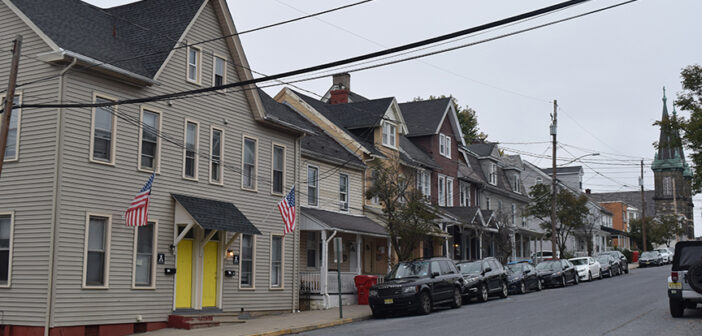Lehigh University professors are working in conjunction with PurpleAir, a company that makes sensors to collect air quality data, to set up monitors in South Bethlehem and the surrounding area.
These monitors will measure particulate matter in the air in order to study the air quality.
Breena Holland, associate professor of political science, said the use of these monitors will determine where and at what times of day the air quality in Bethlehem is the worst. This will allow community members to be better informed of their exposure to poor air quality.
Holland said Bethlehem is currently compliant with particulate matter standards, but the air quality can still be dangerous.
“There are many days when our air quality is unsafe for certain groups of people, such as people who work outside, or sensitive groups, such as those with respiratory problems,” Holland said.
Benjamin Felzer, associate professor of earth and environmental science said the Lehigh Valley has some of the worst air quality in Pennsylvania.
“This is partly due to the large number of diesel trucks traversing our highways and servicing our warehouses, and also because the nature of the valley itself can cause temperature inversions which help trap the pollutants,” Felzer said.
There are currently five PurpleAir monitors in the Lehigh Valley, and there are plans to set up more in South Bethlehem, Felzer said. He said they can be set up at people’s homes, low to the ground where people breathe most often. He said these small, inexpensive devices connect through WiFi to give real-time updates on air quality and particulate matter.
The Environmental Protection Agency (EPA) and Department of Environmental Protection (DEP) have two federal air quality monitors set up in the Lehigh Valley, Felzer and Holland said.
“EPA and DEP monitors only provide information about air quality in the areas where they are located, neither of which is in downtown Bethlehem where all the traffic is,” Holland said. “We want information about pollution exposure that is more localized, so we can see what people are breathing on the street.”
Joan Ramage Macdonald, associate professor of earth and environmental science, said it is important that Lehigh Valley residents know about the air they are being exposed to. She said clean air benefits everyone, especially vulnerable populations like young children who can suffer long-term impacts from early exposure to poor air quality.
Felzer said exposure to high levels of particulate matter can increase the risk of heart disease, stroke, chronic obstructive pulmonary disorder, lung cancer and asthma.
The PurpleAir project requires support from the community to allow for monitors to be set up in people’s homes, Holland said.
“Building relationships in the community is a long-term endeavor,” Macdonald said. “Once you build trust and help people understand why it would benefit them or the community then they tend to be willing to be engaged.”
Lehigh students can get involved in this project by helping with data analysis and determining locations for new monitors. Students interested in participating in the project are encouraged to contact Felzer and Holland.
“It’s exciting to be working locally on something that combines science and community,” Macdonald said.






Comment policy
Comments posted to The Brown and White website are reviewed by a moderator before being approved. Incendiary speech or harassing language, including comments targeted at individuals, may be deemed unacceptable and not published. Spam and other soliciting will also be declined.
The Brown and White also reserves the right to not publish entirely anonymous comments.